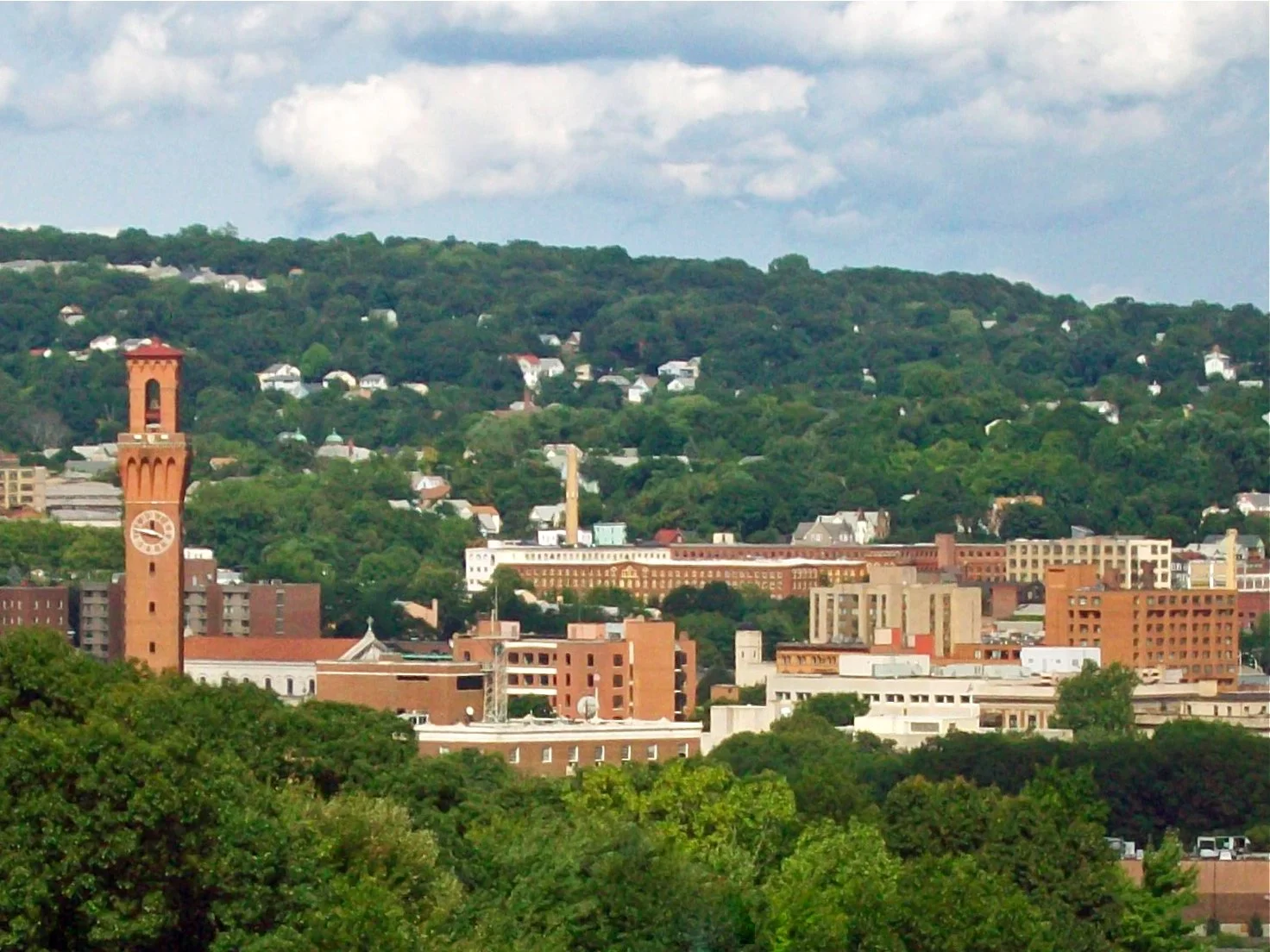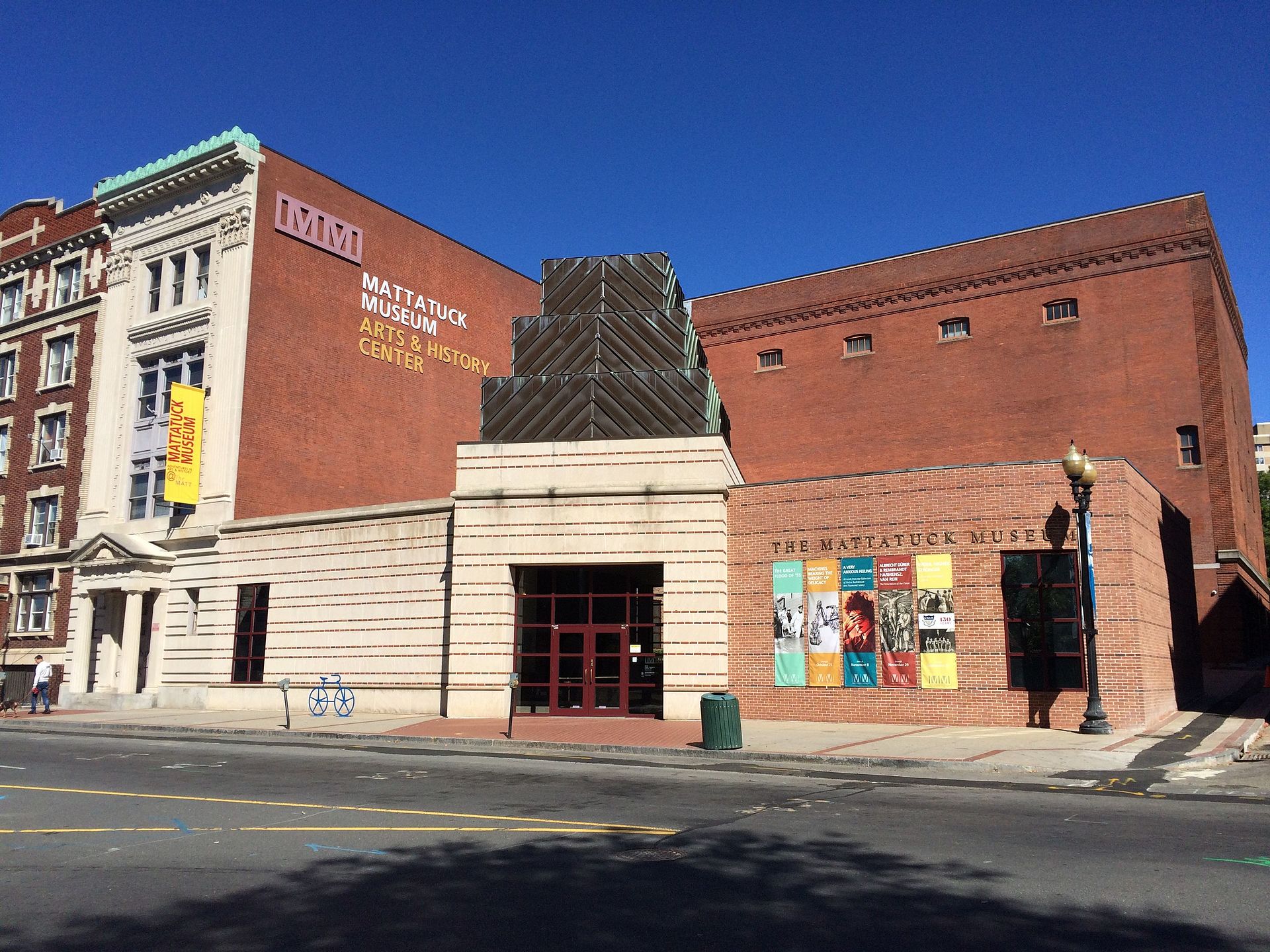
Revolutionary coverings
“Lil Glory’’ (fabric, polyester fill, fringe), by Natalie Baxter, in the show “Stiching the Revolution: Quilts as Agents of Change,’’ at the Mattatuck Museum, Waterbury, Conn., opening May 19.
The show presents about 30 quilts from the museum’s collection, and loans from other New England institutions and contemporary artists. The exhibition pairs historic and modern quilts spanning over 200 years of production viewed as pivotal mediums that express potent beliefs and inspire important change.
Waterbury skyline from the west, with Union Station clock tower at left. The city was once known as the brass and clock / watch capital of America. New England Diary’s editor, Robert Whitcomb, lived near Waterbury in 1962-66 and remembers the many factories still open, the toxic pollution of the Naugatuck River, which flowed through the city, and the necessity of walking up and down steep hills.
Waterbury 'tougher than New York’
Waterbury from the west, with Union Station clock tower at left.
“My past is not pleasant; I grew up in a very tough town, Waterbury, Connecticut. I grew up in New York {City}, too, but Waterbury was tougher.’’
— Dylan McDermott, TV actor
Editor’s note: He’s right. I lived near Waterbury for four years and it’s a tough town, although the communities around it are fairly sedate and bucolic. Waterbury is an old manufacturing city, once nicknamed “The Brass Capital of the World.’’ It was a major center for making watches and clocks (think Timex) as well as most anything made of brass.
The Naugatuck River flows through the middle of it, a major reason for its rise to prominence; the river provided the power for the first factories. I well remember the river’s vivid changing colors depending on which toxic chemicals companies were pouring directly into the Naugatuck. No EPA then!
Floods from Hurricane Diane, in 1955, did tremendous damage along the river.
Despite the city’s rather gritty reputation, it has a fine museum, the Mattatuck.
— Photo by JLLM06




